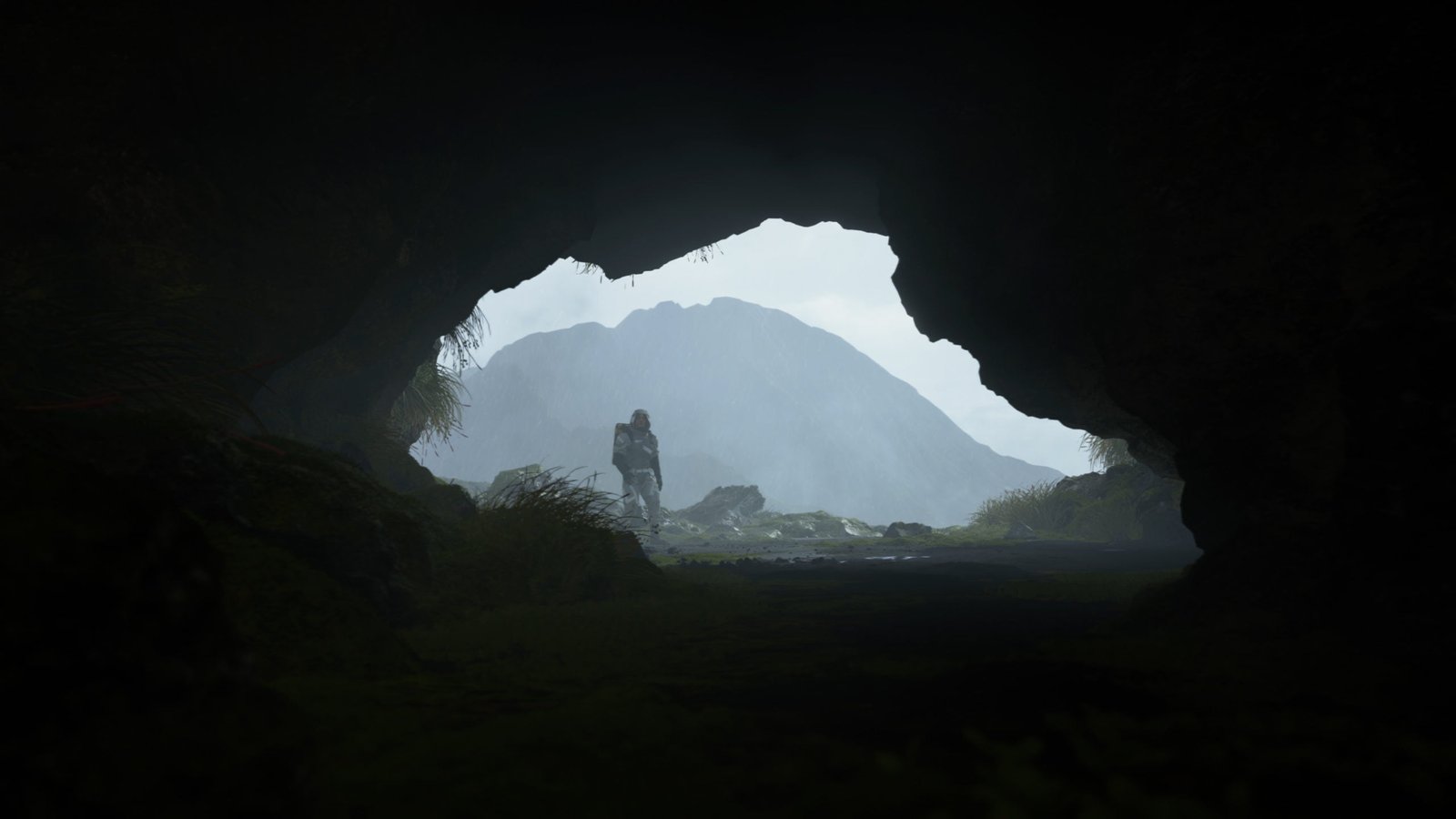I really should’ve written this maybe a month or so back, when I finished Death Stranding. Or maybe even earlier, once I had a good sense of what the game was at the end of Episode 5 or so. You know, do that thing where I write about something timely and relevant for traffic… but then, that’s probably against the (largely unintentional) spirit of this site. And regardless of being long done with Death Stranding, having in fact sold my copy more than a month ago on the assumption that it won’t have any DLC–which it really shouldn’t, for reasons obvious to anyone who’s finished it—and also that the game is long enough I wouldn’t replay it anytime remotely soon, I still don’t really know what to say about it. Or rather, I don’t know what to say about it that’s not obvious, having been said elsewhere by traditional outlets or in fact said explicitly by the game itself.
Like the Metal Gear series that preceded it, there’s more to delve into with Death Stranding than I can touch on in one article, or five. I could write a book about it, but then unlike with many other games I’ve loved, I don’t have a particularly surprising thesis about it. At least, I don’t yet. I don’t have a “hot take,” am for that matter largely opposed to hot takes and the idiocy they’ve wrought on the internet at large, so that might account for part of my difficulty here. While my last letter about Metal Gear Solid 2 focused on confusion, Death Stranding lands on the opposite side of the spectrum. Despite the oddity of its infinite trailers, the bridge babies and the BTs and the Monster Energy Drink pee streams, Death Stranding is actually pretty straightforward.
It could easily be argued that this isn’t new for Kojima, that to a certain extent he’s always worn his heart on his sleeve, but I think this isn’t quite true. Rather, the central project of Death Stranding is about connection, so making sure that his intent wasn’t misinterpreted, that despite the ghost whales we all knew where he stands with regard to the internet and relationships and polarized politics, is key. You’re not supposed to think Kojima’s clever for making the game about literally building bridges between people. The symbolism is blunt because the goal is the message, and as I’ve spent years learning as an English teacher to bored college freshmen, if people can misinterpret something they will; subtlety be damned.
With this, Kojima follows what I consider a general trend in the arts away from complexity and towards directness. Now I don’t think this is a bad thing, and have certainly done so myself. The issue with literary or artistic nuance and/or complexity is that it leaves such a vast, open ocean available for misreadings, and the more urgent your messages are the less you want to allow this. Don’t get me wrong, there are plenty of other things going on in Death Stranding aside from the obvious, but the overall thrust of the story, the fracturing of relationships and the peril this means for the future, is all sorts of blunt because it’s supposed to be. If mass market, popular art is supposed to communicate something, it has to do so with a certain unequivocation in a way that, say, one of Kojima’s beloved Andrei Tarkovsky films doesn’t.

Because of this, the more interesting stories in Death Stranding are the ones at its margins, many of which are entirely optional and easy to miss. For instance, it’s possible to find out where your archrival Higgs spent the game while you were slowly walking from place to place. And that couple you reunite as part of the main storyline, keep following what they’re up to and you’ll soon see whether their fairytale romance can last. In these stories you find the shades of gray missing from the big picture, questions about ethics and technology that aren’t so easily answered by running a few more fetch quests.
This is in keeping, I think, with where the game eventually ends. I don’t want to write too much more about this, given that the other half of Exposition Break is yet to finish the game, but for all the tidying up the story did, it doesn’t really end on a hopeful note. There’s a sort of humanism in the way we’re not left with a deus ex machina of a happy ending, instead the end of Death Stranding is a reprieve. It’s a breath, but one that promises to be short. Maybe one more generation will live, maybe a couple… but not much more than that. There’s no way of returning the world to a prelapsarian state, and all the connections in the world can’t save us from the apocalypse.
But that stuff, as important as it is, matters less than the obvious lessons the game wallops you with every step of the way. There are plenty of odd avenues to explore in Death Stranding, and I suspect that while it won’t have the overarching impact of the Metal Gear Solid games it will end up a revered cult favorite (as much as a AAA-budget game can be a cult thing, though given the weirdness of the industry these days I would argue that yes, it can). Still, whether or not people get to those parts of the game, even if they quit an hour in they’re going to get the gist of Hideo Kojima’s message. That may sound like faint praise, but at this point it’s something I’ve come to admire more than a little bit—sometimes shouting as loudly as you can is the only way to get your message heard, and few things shout as loudly as a screaming baby.




